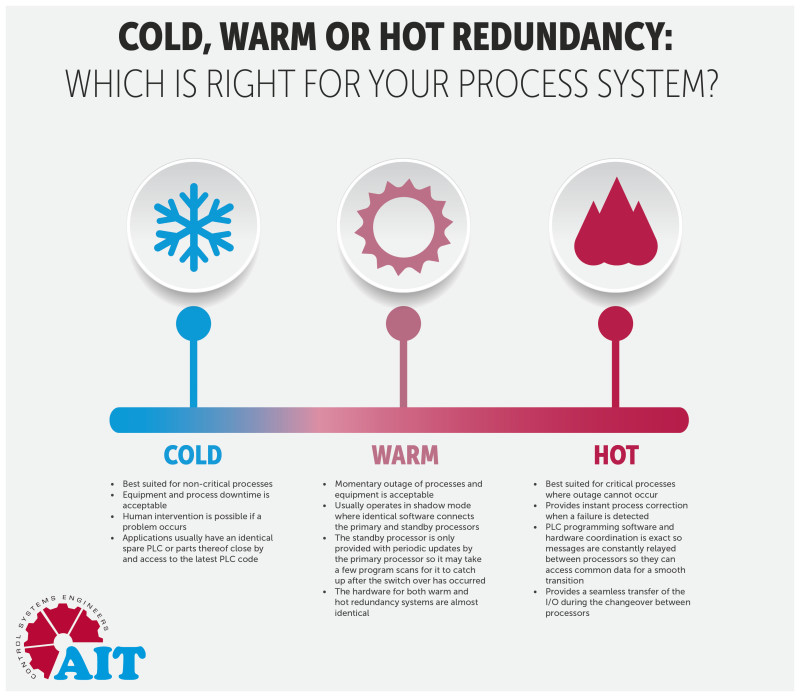Hot, Warm, and Cold Redundant Systems
Sources:
Reliability Engineering 2 (1981), G. N. Sharma, Space Applications Centre, India
Cold, warm and hot redundancy: determining how much you need

Abstract
Unplanned failures in spaceborne and ground systems are minimized with redundancy, either active (hot), standby (cold), or intermediate (warm). This paper examines both types in detail to optimize reliability.
Notation
- [R]hs: Reliability of hot redundant system
- [R]cs: Reliability of cold redundant system
- MTBF: Mean Time Between Failures
- r: Reliability of a single unit
Introduction
Reliability for critical systems can be achieved through different redundancy strategies:
Hot Redundancy: All units operate simultaneously, allowing for instant failover.
Cold Redundancy: Only one unit is operational, with standby units activated if needed.
Warm Redundancy (per Automation IT): Used in processes requiring rapid response but tolerating brief outages; it engages secondary processors quickly without seamless transition.
Hot Redundant Systems
Hot redundancy enhances reliability by maintaining constant operation across components. It suits critical processes where interruptions are unacceptable.
Mean Time Between Failures (MTBF)
The MTBF for n exponential units in parallel extends as additional units are added.
Cold Redundant Systems
Cold redundancy suits non-critical systems where downtime is manageable. It relies on standby units to activate after primary failure.
Warm Redundant Systems
A warm system allows standby units to synchronize periodically, suitable for processes that allow brief outages but require quick recovery.
Key Observations
- First Redundant Unit in hot redundancy increases reliability ~1.6x with MTBF mission time.
- Cold Redundancy generally offers higher reliability when ideal switching is possible.
- Warm Redundancy minimizes system restart time, providing an intermediate solution for systems needing balance.
MTBF Comparison
Cold redundancy provides a higher MTBF than hot or warm redundancy when extra units are added.
Conclusion
Cold and warm redundancies offer distinct benefits in reliability and MTBF, each appropriate to specific system requirements..
